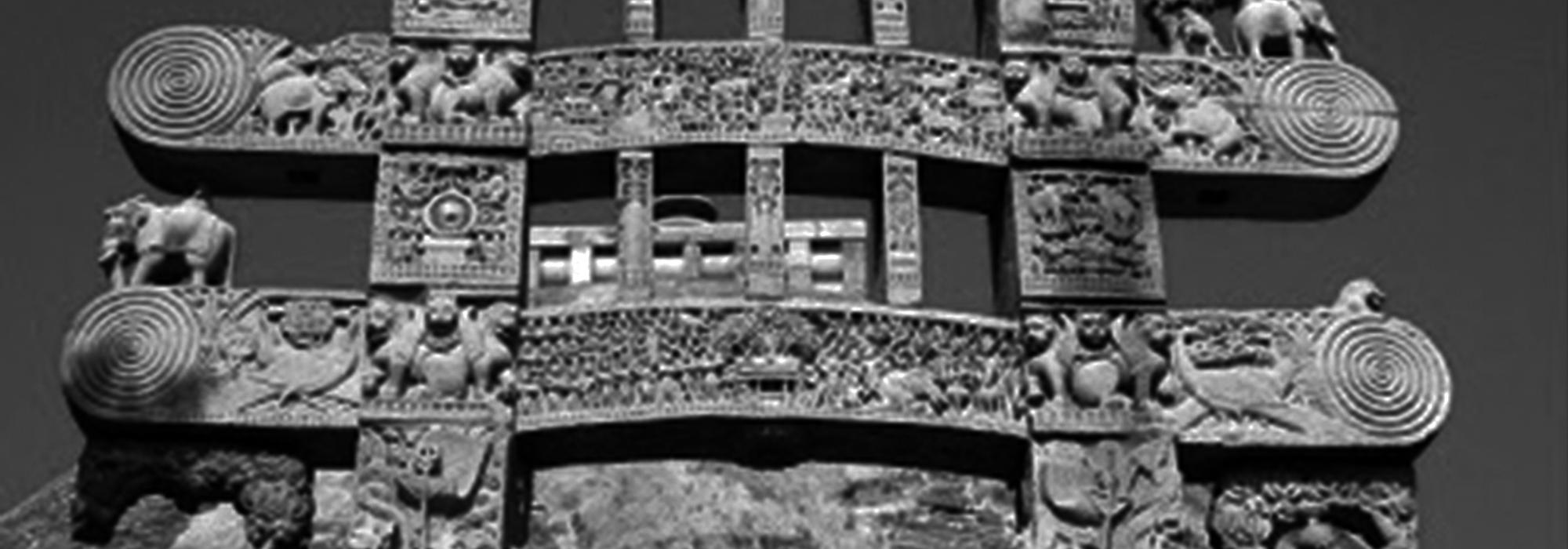Indore
From Omkareshwar, we reached Indore by around 4 in the evening and had our lunch at a dhaba there. The order was the usual – one dal without onion or garlic for RG. Every other order was the fancy of each of us; paneer butter masal, butter rotis, malai paneer, kadai vegetables, it went on. We finished lunch and headed towards Lalbagh, which also houses a palace and (supposedly) a museum. We reached the huge cast-iron gates of the park to learn that the ‘museum’ would close at 5 pm. We sprinted. We bought the tickets in haste and rushed inside. V even negotiated with the curator there that we'd take a few minutes longer, optimistic that there would be exhibits of (our) interest. The building is the palace of one Tukoji Rao Holkar (TRH).
There really was no museum. His palace itself is the exhibit. The halls were huge and grand, the walls decorated in rich silken curtains. The floors were exquisite Italian and French marbles. The chandeliers shone the many lights of lavishness and high living. The furniture was truly rich. The king’s bathroom is modeled after the Roman baths. The huge halls were thematically done to the period of the renaissance. The opulence struck us with awe. But just awe had little strength of sustenance. As the sense of awe faded, so did the grandeur of the palace. The opulence that we could hardly relate to seemed obscene. We walked out as the palace was closing for the day. It was nevertheless an eventful day for us. As the morning sun rose and bathed the ghats of the Narmada, we had stood in reverence to the Holkar queen. And now, the evening sun was setting on the grand palace of the Holkar king even as we struggled to remember the name, ‘TRH.’ The dark shadows lengthened as the legacy went down with the sun. We walked away through the park to the vehicle.
We had a good part of the evening to spend at Indore. And we had a whole list of recommended things to be done at Indore, from shopping to eating. The first on the list was lassi and rabbadi. Paramaar took us to a small shop that’s supposed to be the best in Indore. The lassi was indeed good. So was the rabbadi. It was time for shopping and the ATM too was nearby. The first on the list was buying a nightie, one that has filigree around the neck – what’s it called – sp(r)ocking? smocking? something? Mrs. A had given clear directions and instructions. Asking around a few people took us there but only to find that the shop was closed. (It was incidentally a Sunday). Nevertheless, we reconciled to buying them from another shop close by.
As we shopped, JM in his elemental best narrated the story of the ‘ghanta.’ If ever you thought you heard the sounds of ringing bells and thought it was celestial and divine that marked your spiritual elevation, you better think again. And JM had his own experience to narrate. He was hearing the sounds of the bell sometimes and what he too had liked to believe as signs of spiritual evolution, a state of meditative trance, turned out paradoxically as (just) the invitation bell of a priest to his paramour! This hilarious and yet philosophical ‘ghanta’ story then became an annexure to the Panchatantra, with RG narrating it in Sanskrit, in the jargon and language of the Panchatantra.
There was just one other agenda at Indore – We bought a pair of slippers and we then set off for Bhopal.
Bhopal
Bhopal was our transit to Sanchi. The bright glow of the full moon accompanied us through the journey as we talked and bantered of many things, the highlight being N’s mimickry of his dad! There were interesting, yet distressing stories too of difficult marriages that N and V narrated. The bright full moon kept us company all along. Our journeys were never boring, not even for a second. We reached Bhopal at around 10:30 pm. A huge mosque (Jama masjid) welcomed us, mockingly perhaps. The wonderful full moon that we had all along so adored became now a queasy crescent atop the mosque. This mosque apparently carries the distinction of being one of the largest in the country. That part of the town we entered into was distinctly Islamic.
Bhopal’s demography is marked by a 43% Muslim population. From Bhojapal of the medieval times to Bhopal of today is such a telling story of Hindu defeat. What did the ‘ja’ that vanished give rise to!? We had to carefully search for accommodation. We did manage to find rooms with some effort. And we rather preferred to make do with milk and bananas for dinner that night. But that sufficed.
Sanchi
Early next morning, we set out to Sanchi. Our breakfast was again powa and samosa at an eatery close to Sanchi. We bought the tickets and drove to the Stupa. Sanchi is a World heritage center and is commendably maintained. Seems like UNESCO’s grants have indeed been well-utilized here. It was a wonderfully bright and pleasant day. C was having a field day with his camera. The opportunities were innumerable and he patiently grabbed them all. Every inch of stone was a masterpiece in itself. An artform so advanced 2,000 yrs ago fills us with wonder. And the life and society of those times, frozen in stone, so wonderfully spring to life. From scenes of war to casual scenes of city streets and homes, the pictures of society are so telling and vivid. Each of the four gates in the four directions and especially the Northern gate, is an elevating passage to the first century BCE.
[contextly_sidebar id="d37xLQKlbAOZvLkzKOBl3GIGpb85unl9"]















































Comments